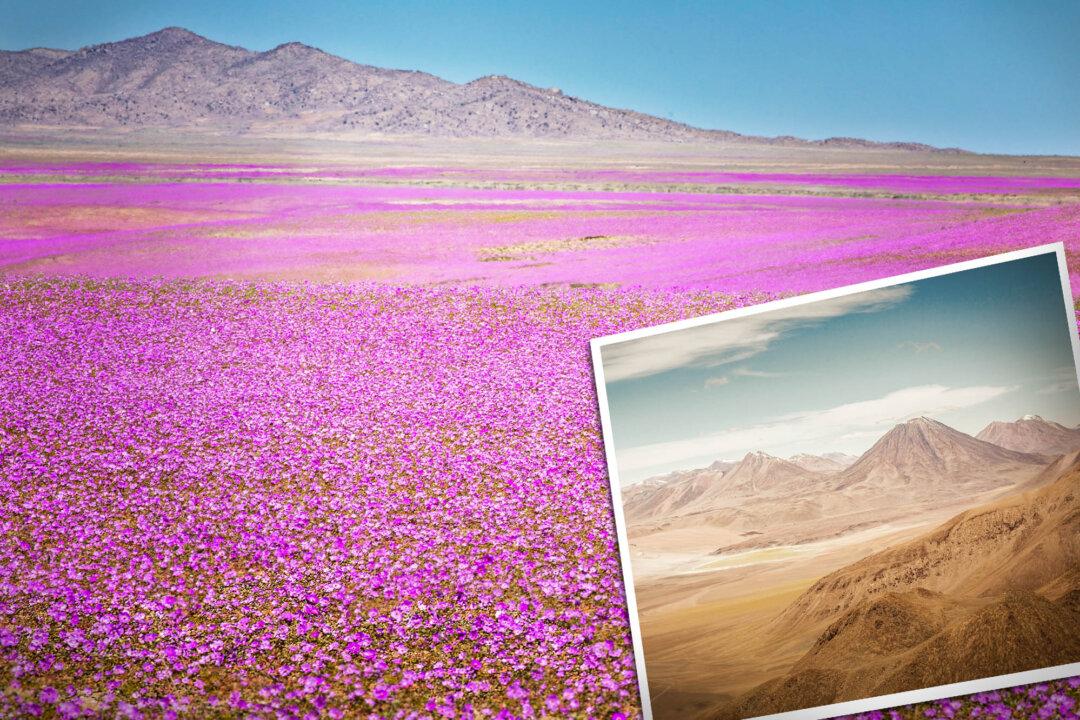More than a light drizzle of rain pitter-pattered down on the world’s driest desert lying along the rugged horn of South America, and, startlingly, it caused a seemingly insatiable bloom across the sand.
Nearly a decade ago, the Atacama Desert in Chile saw its heaviest rainfall in twenty years, causing massive mudslides, overflowing rivers, and the deaths of 28 people. Yet these showers also caused the arid coastal plateau of salt flats bordering the Andes to pretend, apparently, as though it were a scene from “The Sound of Music.” Blooming flowers appeared everywhere in the desert as an overabundance of dormant perennial flower seeds, that had lain in the desert for years, perhaps decades, were suddenly shaken to life by the sudden rainfall.






